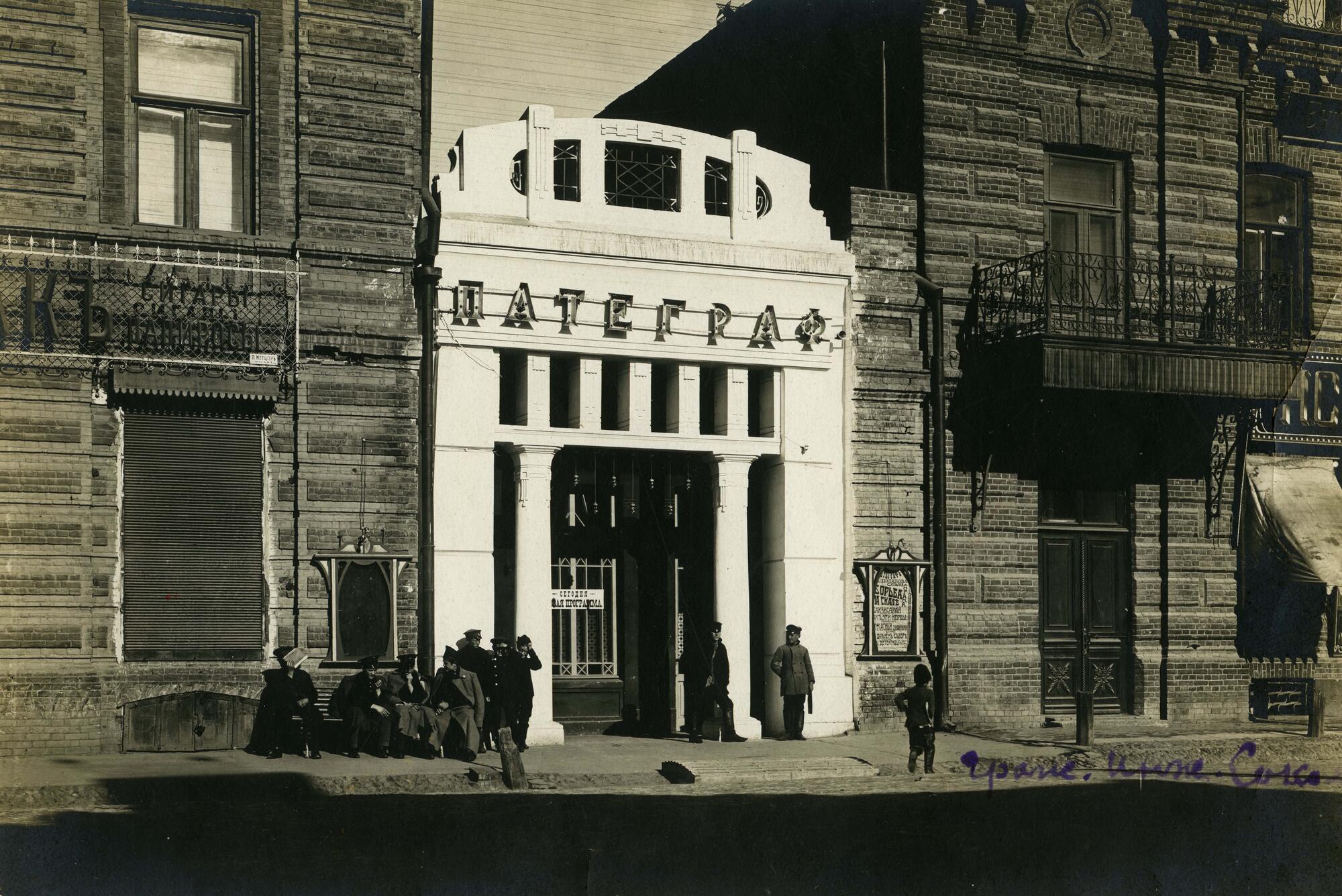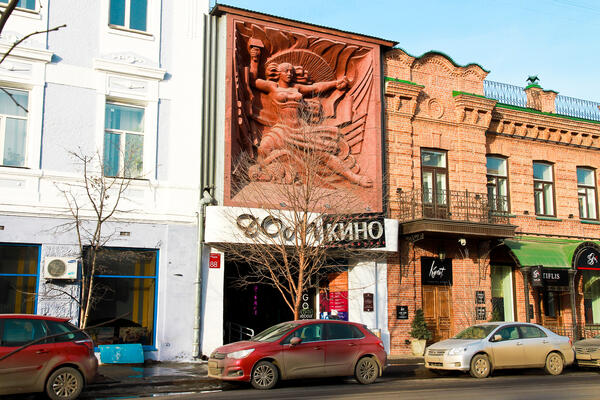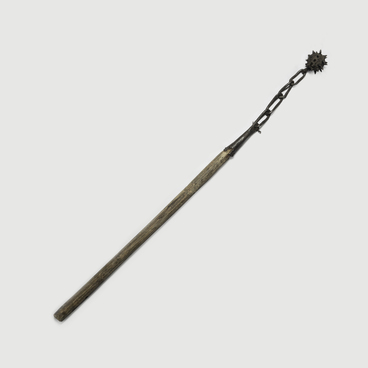The photo depicts ‘Pategraf’ cinema. Its history began in 1908 when the technician Vasily Polyakov came to Krasnoyarsk with a two-week tour to show people the latest invention — the cinematograph. At that time, the cinema was a wonder, so big crowds gathered for each session. Realizing the big public interest caused by this phenomenon, Polyakov decided to establish a permanent cinema hall in Krasnoyarsk.
At first, movies were shown in a hastily built wooden building located in the city garden. The first cinema hall was called ‘Kinemo’. However, in the fall it was uncomfortable to be in an unheated room. Then the residents of the city offered to help Polyakov with renting a room in the building of the Merchant’s Assembly. There it existed for another two years until the building fell into disrepair. A new place for the cinema was found in the house of merchant Pyotr Gadalov — on September 19, 1910, it was opened to citizens. The cinema was designed by the provincial architect Vladimir Sokolovsky, who created many architectural monuments of Krasnoyarsk. The cinema was attached behind the eastern end of the Gadalovs' house. At the time the one-story building perfectly fit between the Gadalovs' property and the Semyonov and Romanov trading house.
It was not by chance that the first Krasnoyarsk cinema got its name. The name “Pategraf” was given to it in honor of the brothers Emile and Charles Pathé — the inventors of the phonograph and the film distribution system that is still relevant to this day. There was a company called “Brothers Pathé” at that time in Russia, and this name was widely known. The company opened its first branch in Moscow in 1903, selling gramophone records. In addition, the company “Pathe” created a gramophone of a special design, which was called a “phonograph”. The records of this company differed from gramophone records not only in the recording principle but also in appearance: the names of performers were engraved directly on the central part of the record and covered with paint. Only the records of the “Golden Series” had the traditional label. Records were played from the middle, not from the rim. These records were the beginning of the company’s entry into the Russian market. However, the movie was considered a more promising project.
Polyakov signed a contract with the Russian branch of the French company and began to buy the latest films from it. The film distributor announced premieres in the ‘Krasnoyarsk Vestnik’ newspaper. The ticket price for adults reached 30, and sometimes 60 kopecks, for children — 20 kopecks (about the same price as a pound of meat).
The ‘Pategraf’ cinema was very popular. Both feature films and documentaries were shown there. Polyakov made his films as well. For example, in 1913, he documented a parade of troops on the city square in honor of the 300th anniversary of the Romanov dynasty.
In more than a century of history, the ‘Pategraf’ changed more than one name: in the first Soviet years, it was named ‘ARS’ (until 1932), then it was renamed to ‘Rot-Front’ (1932-1942) and ‘October’ (1942-1955). In the 1970s, a recognizable bas-relief appeared on the central facade of the building. Since 1995, this building has been known as the Cinema House.
At first, movies were shown in a hastily built wooden building located in the city garden. The first cinema hall was called ‘Kinemo’. However, in the fall it was uncomfortable to be in an unheated room. Then the residents of the city offered to help Polyakov with renting a room in the building of the Merchant’s Assembly. There it existed for another two years until the building fell into disrepair. A new place for the cinema was found in the house of merchant Pyotr Gadalov — on September 19, 1910, it was opened to citizens. The cinema was designed by the provincial architect Vladimir Sokolovsky, who created many architectural monuments of Krasnoyarsk. The cinema was attached behind the eastern end of the Gadalovs' house. At the time the one-story building perfectly fit between the Gadalovs' property and the Semyonov and Romanov trading house.
It was not by chance that the first Krasnoyarsk cinema got its name. The name “Pategraf” was given to it in honor of the brothers Emile and Charles Pathé — the inventors of the phonograph and the film distribution system that is still relevant to this day. There was a company called “Brothers Pathé” at that time in Russia, and this name was widely known. The company opened its first branch in Moscow in 1903, selling gramophone records. In addition, the company “Pathe” created a gramophone of a special design, which was called a “phonograph”. The records of this company differed from gramophone records not only in the recording principle but also in appearance: the names of performers were engraved directly on the central part of the record and covered with paint. Only the records of the “Golden Series” had the traditional label. Records were played from the middle, not from the rim. These records were the beginning of the company’s entry into the Russian market. However, the movie was considered a more promising project.
Polyakov signed a contract with the Russian branch of the French company and began to buy the latest films from it. The film distributor announced premieres in the ‘Krasnoyarsk Vestnik’ newspaper. The ticket price for adults reached 30, and sometimes 60 kopecks, for children — 20 kopecks (about the same price as a pound of meat).
The ‘Pategraf’ cinema was very popular. Both feature films and documentaries were shown there. Polyakov made his films as well. For example, in 1913, he documented a parade of troops on the city square in honor of the 300th anniversary of the Romanov dynasty.
In more than a century of history, the ‘Pategraf’ changed more than one name: in the first Soviet years, it was named ‘ARS’ (until 1932), then it was renamed to ‘Rot-Front’ (1932-1942) and ‘October’ (1942-1955). In the 1970s, a recognizable bas-relief appeared on the central facade of the building. Since 1995, this building has been known as the Cinema House.




